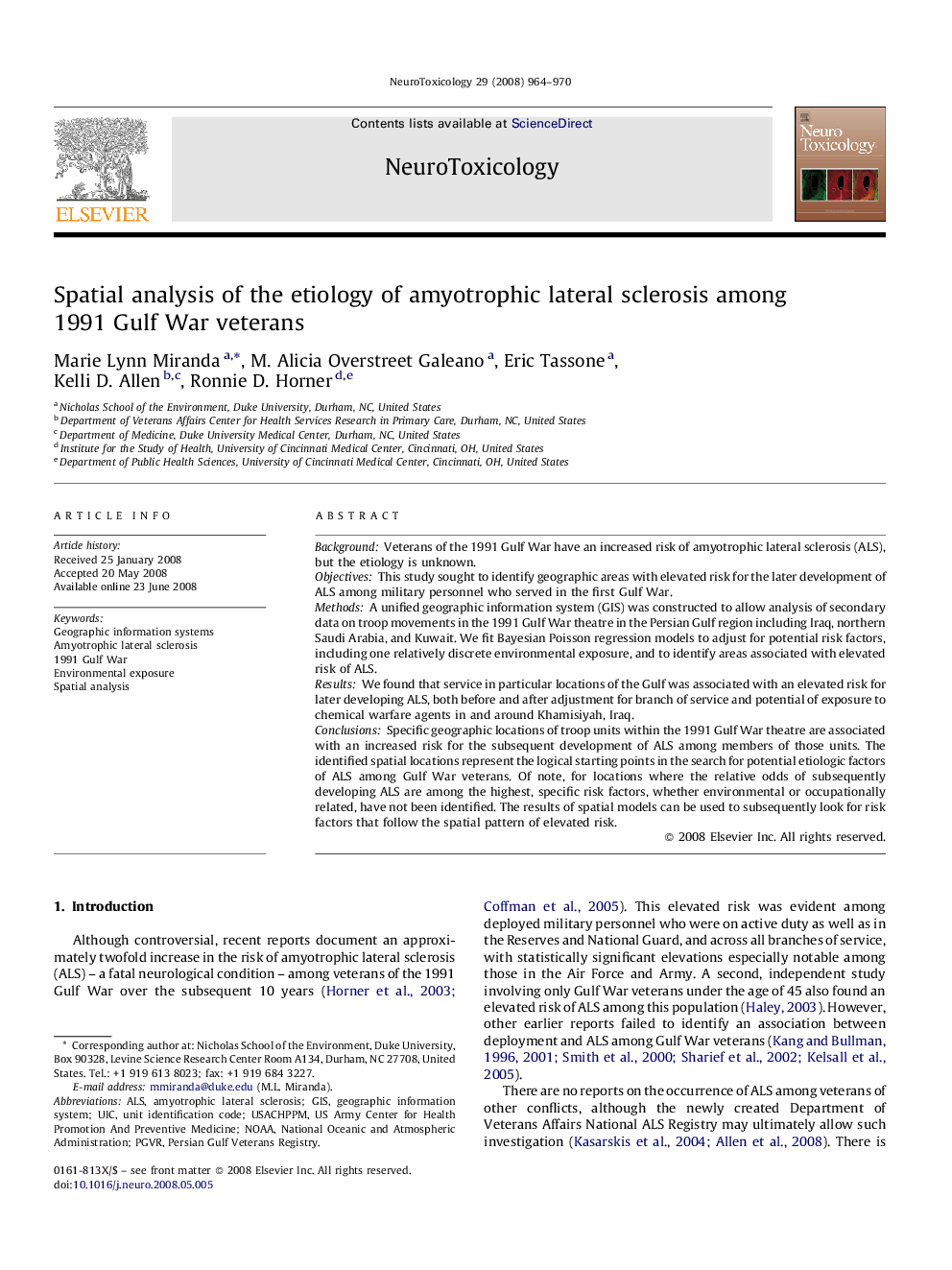| Article ID | Journal | Published Year | Pages | File Type |
|---|---|---|---|---|
| 2590046 | NeuroToxicology | 2008 | 7 Pages |
BackgroundVeterans of the 1991 Gulf War have an increased risk of amyotrophic lateral sclerosis (ALS), but the etiology is unknown.ObjectivesThis study sought to identify geographic areas with elevated risk for the later development of ALS among military personnel who served in the first Gulf War.MethodsA unified geographic information system (GIS) was constructed to allow analysis of secondary data on troop movements in the 1991 Gulf War theatre in the Persian Gulf region including Iraq, northern Saudi Arabia, and Kuwait. We fit Bayesian Poisson regression models to adjust for potential risk factors, including one relatively discrete environmental exposure, and to identify areas associated with elevated risk of ALS.ResultsWe found that service in particular locations of the Gulf was associated with an elevated risk for later developing ALS, both before and after adjustment for branch of service and potential of exposure to chemical warfare agents in and around Khamisiyah, Iraq.ConclusionsSpecific geographic locations of troop units within the 1991 Gulf War theatre are associated with an increased risk for the subsequent development of ALS among members of those units. The identified spatial locations represent the logical starting points in the search for potential etiologic factors of ALS among Gulf War veterans. Of note, for locations where the relative odds of subsequently developing ALS are among the highest, specific risk factors, whether environmental or occupationally related, have not been identified. The results of spatial models can be used to subsequently look for risk factors that follow the spatial pattern of elevated risk.
